
Plebeia is a genus of mostly small-bodied stingless bees, formerly included in the genus Trigona. Most of the ~45 species are placed in the subgenus (Plebeia) (s.s.), but there also are four species in the subgenus (Scaura). They differ in only minor structural details, primarily of the hind leg, from other genera that were formerly treated as constituents of Trigona. In some classifications, the genus Schwarziana is treated as a subgenus within Plebeia, but recent morphological analyses indicate that Schwarziana is a distinct lineage, while Plebeia is paraphyletic.

The cosmopolitan bee genus Ceratina, often referred to as small carpenter bees, is the sole lineage of the tribe Ceratinini, and is not closely related to the more familiar carpenter bees. The genus presently contains over 300 species in 23 subgenera. They make nests in dead wood, stems, or pith, and while many are solitary, a number are subsocial, with mothers caring for their larvae, and in a few cases where multiple females are found in a single nest, daughters or sisters may form very small, weakly eusocial colonies. One species is unique for having both social and asocial populations, Ceratina australensis, which exhibits all of the pre-adaptations for successful group living. This species is socially polymorphic with both solitary and social nests collected in sympatry. Social colonies in that species consist of two foundresses, one contributing both foraging and reproductive effort and the second which remains at the nest as a passive guard. Cooperative nesting provides no overt reproductive benefits over solitary nesting in this population, although brood survival tends to be greater in social colonies. Maternal longevity, subsociality and bivoltine nesting phenology in this species favour colony formation, while dispersal habits and offspring longevity may inhibit more frequent social nesting in this and other ceratinines.
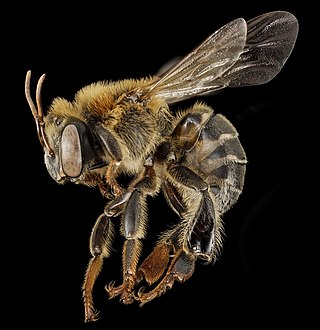
Melipona is a genus of stingless bees, widespread in warm areas of the Neotropics, from Sinaloa and Tamaulipas (México) to Tucumán and Misiones (Argentina). About 70 species are known. The largest producer of honey from Melipona bees in Mexico is in the state of Yucatán where bees are studied at an interactive park called "Bee Planet" which is within the Cuxtal Ecological Reserve.
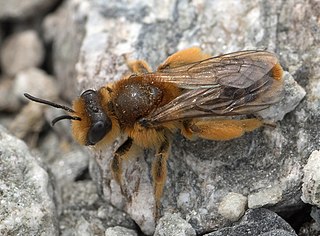
Leioproctus is a genus in the plaster bee family Colletidae. Its members are primarily found in Australasia and temperate South America, and include the most common native bees in New Zealand.
Hesperapis is a genus of evening bees in the family Melittidae. There are at least 30 described species in Hesperapis.

Epeolus is a genus of cuckoo bees in the family Apidae. They are often known as variegated cuckoo-bees.

Lithurgopsis is a genus of northern cactus woodborers in the family Megachilidae. There are at least nine described species in Lithurgopsis.
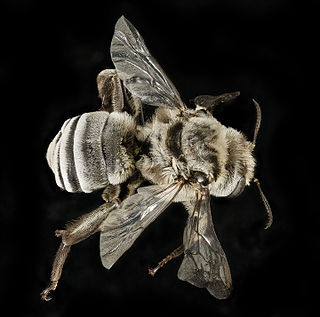
Melitoma is a genus of chimney bees in the family Apidae. There are about 13 described species in Melitoma. Found in the Nearctic and Neotropics.

Protandrenini is a tribe of mining bees in the family Andrenidae. There are at least 12 genera and at least 380 described species in Protandrenini.

Anthidiellum is a genus of rotund resin bees in the family Megachilidae. There are more than 60 described species in Anthidiellum.

Rophitinae is a subfamily of sweat bees in the family Halictidae. There are about 13 genera and more than 260 described species in Rophitinae.
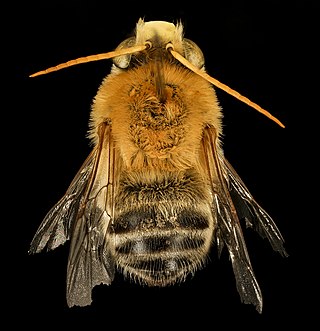
Martinapis is a genus of long-horned bees in the family Apidae. There are at least three described species in Martinapis.
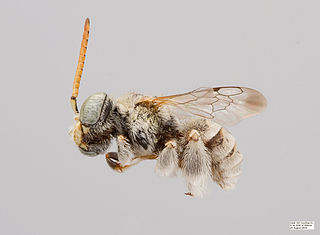
Anthophorula is a genus of bees in the family Apidae. There are more than 60 described species in Anthophorula.
Oreopasites is a genus of cuckoo bees in the family Apidae. There are about 11 described species in Oreopasites.

Panurginus is a genus of bees in the family Andrenidae. There are more than 50 described species in Panurginus.
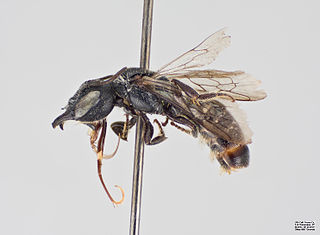
Protosmia is a genus of subgenus Chelostomopsis in the family Megachilidae. There are more than 30 described species in Protosmia.
Anthodioctes is a genus of bee in the family Megachilidae.

Ancyloscelis is a genus of bees belonging to the family Apidae.















